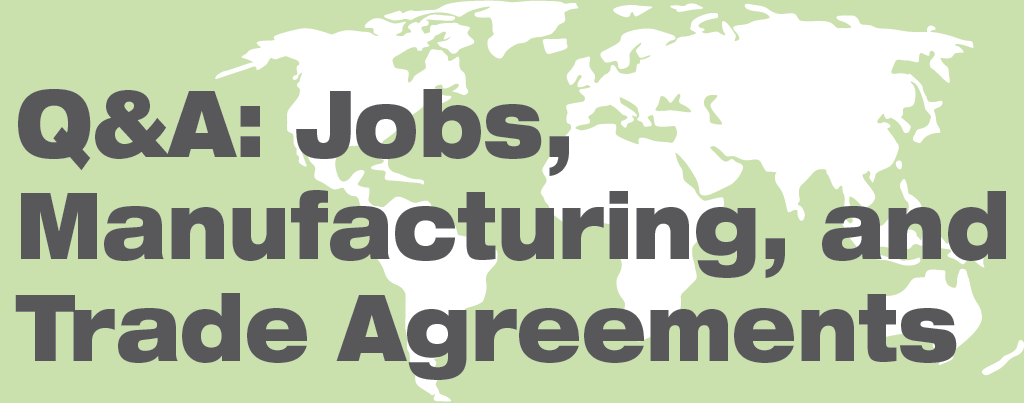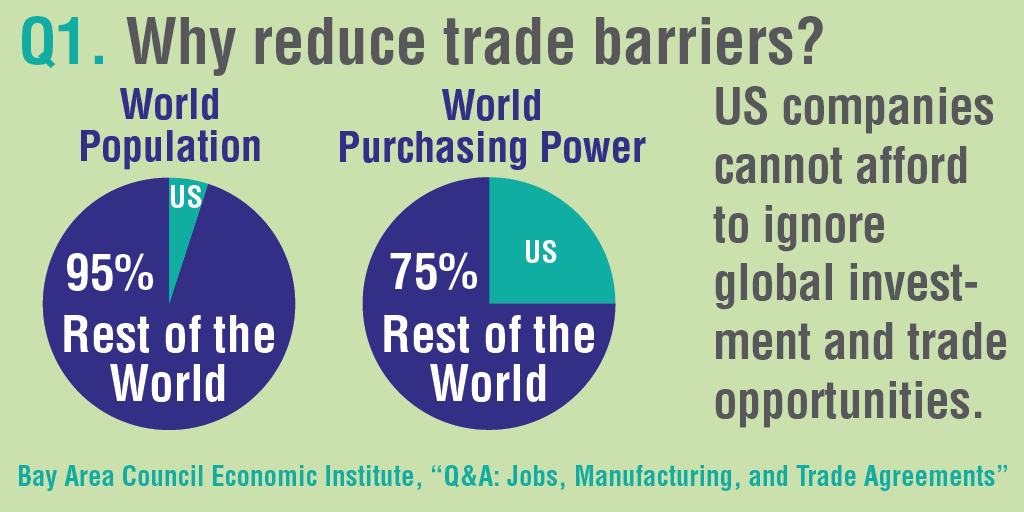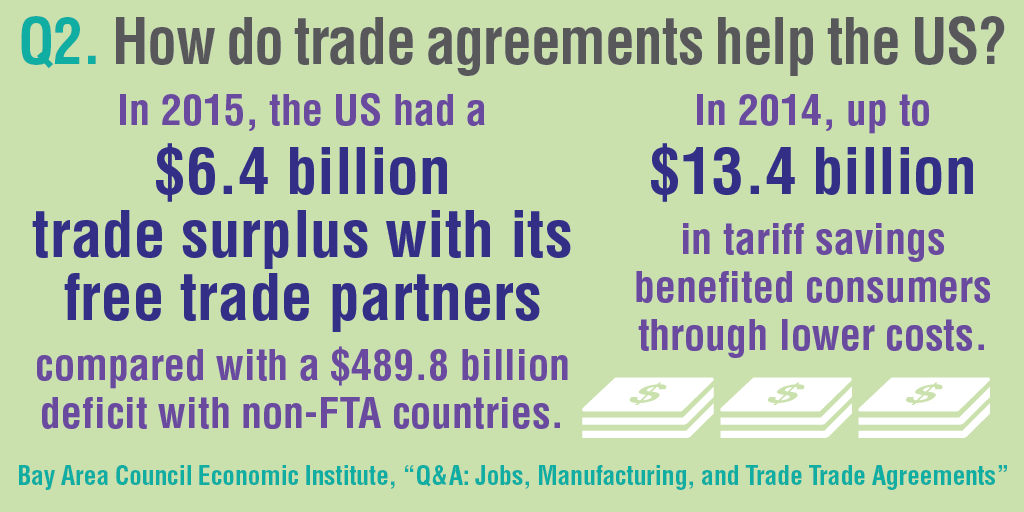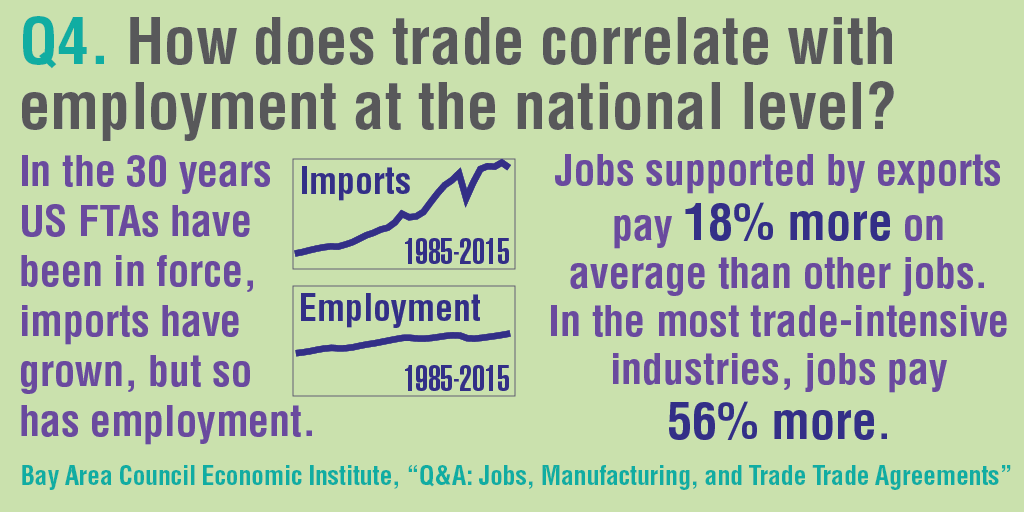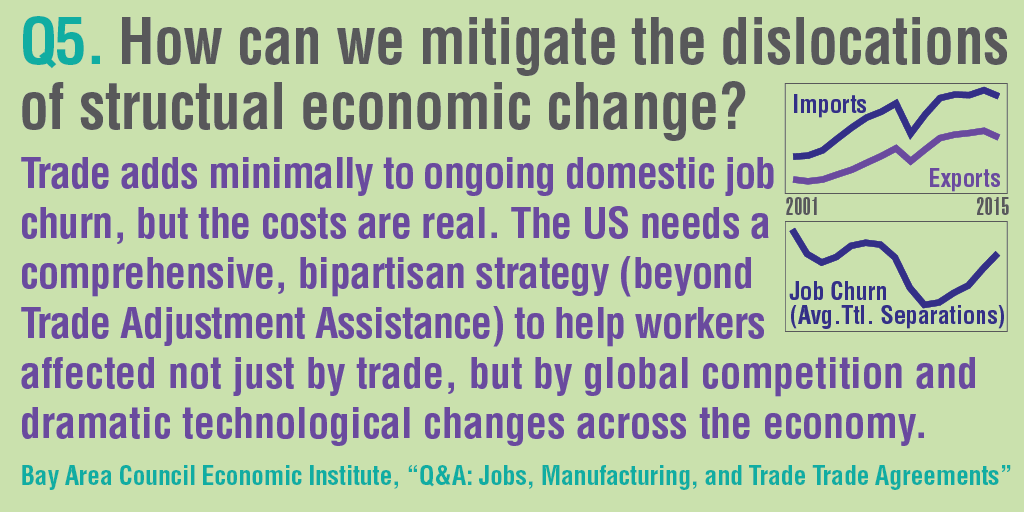Acknowledgements
This report was prepared by Sean Randolph, Senior Director at the Bay Area Council Economic Institute. The Institute wishes to thank the many trade and economic experts who provided valuable insights and information, including Linda Dempsey, Vice President, International Economic Affairs, National Association of Manufacturers; Dorothy Dwoskin, Senior Director, Global Trade Policy and Strategy, Microsoft; Lisa Malloy, Director, Policy Communications, Intel; Matt Perault, Head of Global Policy Development, Facebook; Ken Monahan, Director for International Trade Policy, National Association of Manufacturers; and Chris Wall and Robert James, Partners, Pillsbury Winthrop Shaw Pittman.
The Institute particularly wishes to thank the many organizations that supported this research: Bank of the West, DLA Piper, HSBC, Intel, Microsoft, Pillsbury Winthrop Shaw Pittman, the Port of Oakland, San Francisco International Airport, Visa, and Wells Fargo.
